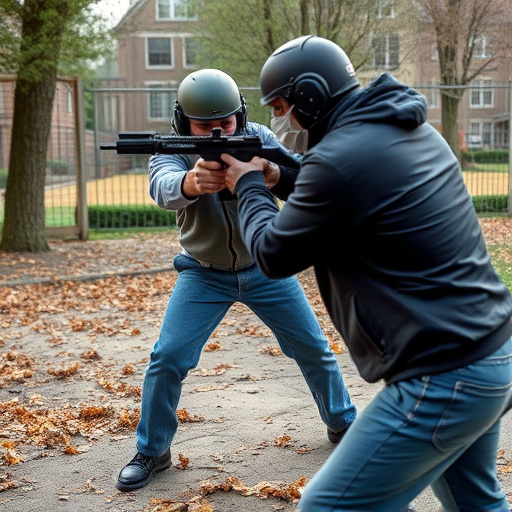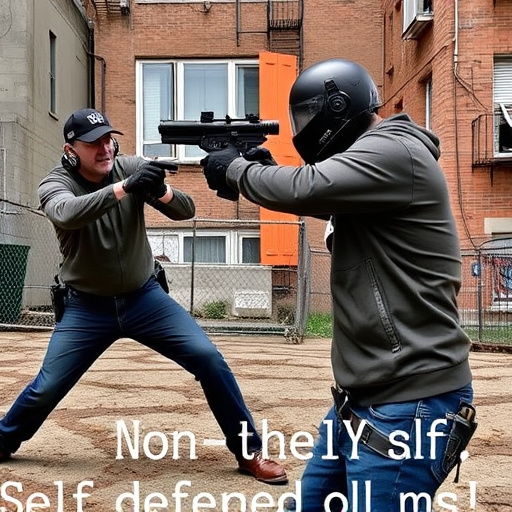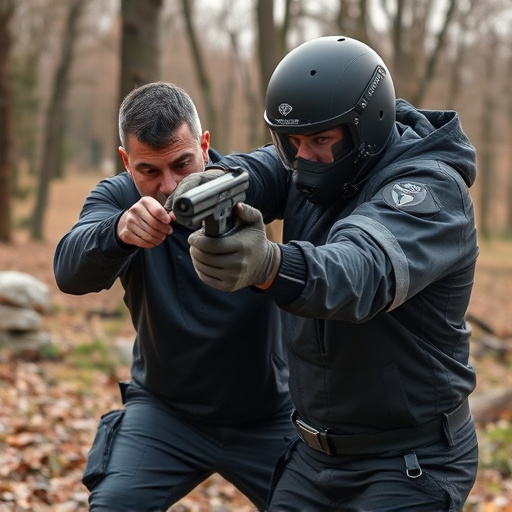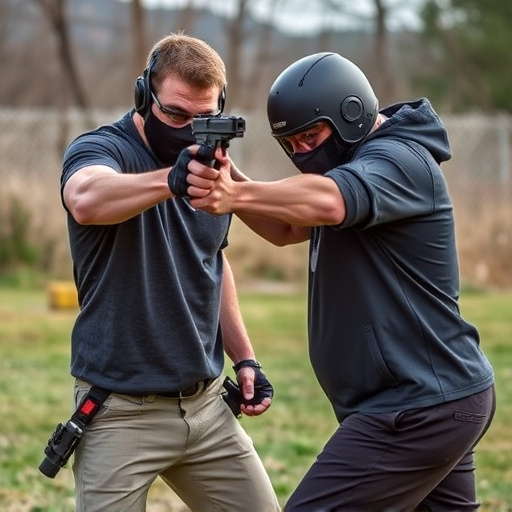Projectile vs Contact Stun Weapons: Choosing the Best Defense for Women
This text explores the selection process for the best self-defense stun gun tailored to women's…….
This text explores the selection process for the best self-defense stun gun tailored to women's unique needs. It highlights the distinction between projectile (tasers) and contact stun devices, each with pros and cons. Key considerations include portability, ease of use, adjustable intensity, range, power, and safety features like automated shut-off. Understanding these factors helps women make informed choices, balancing effectiveness, discretion, and personal comfort levels to ensure responsible self-defense.
In today’s world, understanding your options for self-defense is crucial. When it comes to protecting yourself, choosing between projectile and contact stun weapons can be a game-changer. This comprehensive guide explores the intricacies of these devices, specifically tailored to meet the needs of women seeking the best self-defense stun gun. We delve into their unique features, advantages, and disadvantages, offering insights to help you make an informed decision for your safety and peace of mind.
- Understanding Projectile and Contact Stun Weapons: A Detailed Look
- Factors to Consider When Choosing the Best Self-Defense Stun Gun for Women
- Advantages and Disadvantages of Projectile Stun Devices
- Exploring Contact Stun Guns: Design, Effectiveness, and Safety
- Real-World Applications: Which Stun Weapon is More Suitable for Women's Self-Defense?
Understanding Projectile and Contact Stun Weapons: A Detailed Look

Stun weapons are a popular choice for personal protection, especially among women seeking effective self-defense tools. When considering options, it’s crucial to understand the distinction between projectile and contact stun weapons. Projectile stun guns, like tasers, shoot small probes that deliver an electric shock from a distance, rendering the target temporarily incapacitate. They are known for their quick deployment and non-lethal nature, making them ideal for self-defense scenarios where de-escalation is a priority. On the other hand, contact stun weapons require physical contact to activate, such as stun batons or electronic hand cues. These devices use electrical currents to stun the target upon direct contact, offering a more focused and targeted response.
For women seeking the best self-defense stun gun, understanding these differences is key. Projectile weapons provide a safe distance for users, allowing them to disable an attacker without close physical interaction. Contact stun devices, however, offer precise control in situations where direct intervention is necessary. The choice ultimately depends on individual needs and comfort levels, ensuring that the selected weapon aligns with potential self-defense scenarios.
Factors to Consider When Choosing the Best Self-Defense Stun Gun for Women

When choosing a self-defense stun gun tailored for women, several key factors come into play. Firstly, consider the size and weight of the device; lighter, more compact models are easier to carry discreetly and use with one hand. This is particularly important for women who might need to defend themselves in unexpected situations. Additionally, look for a weapon with an adjustable stun intensity setting. This feature allows users to adapt to various threats and ensure a powerful enough shock without causing excessive harm, which can be crucial in de-escalating a situation.
Another essential aspect is the range and power of the stun. While close-range stun guns are more effective for hand-to-hand combat, longer-range models offer an extra layer of protection. Higher voltage outputs generally provide a stronger stun, but it’s vital to balance this with safety considerations. Look for products with built-in safety features like automated shut-off mechanisms and low-battery indicators to ensure responsible use.
Advantages and Disadvantages of Projectile Stun Devices

Projectile stun devices, often referred to as stun guns or electroshock weapons, offer a unique approach to personal defense compared to traditional contact-based stun devices. One of their key advantages is distance. Projectile stun devices allow users to disable an attacker from afar, providing a crucial split second for escape or backup help. This feature is particularly beneficial for women who may be in situations where direct physical contact is difficult or dangerous. For instance, a stun gun can be easily concealed and deployed discreetly, making it an attractive option for those seeking the best self-defense stun gun for women.
However, these devices also come with disadvantages. Range and accuracy are critical factors; if not used properly, they may not achieve their intended effect. Misuse or poor handling could lead to a missed target, leaving the user vulnerable. Additionally, projectile stun devices often require more training and practice to master than contact stun tools, which can be a concern for individuals without prior self-defense experience. Despite these challenges, understanding the advantages and disadvantages of projectile stun devices empowers users to make informed decisions regarding their personal safety.
Exploring Contact Stun Guns: Design, Effectiveness, and Safety

Contact stun guns, also known as electronic control devices (ECDs), represent a specific category of stun weapons designed to incapacitate an aggressor through electrical impulses rather than physical force. These devices are gaining popularity, especially among women seeking effective self-defense options. The design of contact stun guns typically involves two metal prongs or probes that make contact with the attacker’s body, delivering a powerful electric shock. This immediate impact can temporarily paralyze muscles, causing the target to drop to the ground and remain unconscious for several minutes.
When considering the effectiveness of these weapons, it’s crucial to look at their ease of use, range, and power output. The best self-defense stun gun for women should be compact and lightweight, ensuring it can be easily carried in a purse or hidden on the body. A longer reach and higher voltage are also desirable features as they provide more time to escape and greater deterrence. Safety is another critical aspect; modern ECDs incorporate safety switches and mechanisms to prevent accidental activation, ensuring users can rely on their stun gun as a last resort for self-defense.
Real-World Applications: Which Stun Weapon is More Suitable for Women's Self-Defense?

In real-world applications, the choice between projectile and contact stun weapons for women’s self-defense depends on various factors. While a stun gun designed for self-defense offers a non-lethal means of protecting oneself from potential threats, its effectiveness can be limited by range and power. On the other hand, personal stun batons or tasers with a projectile mechanism provide a longer reach, allowing users to maintain distance from an attacker. This feature can be particularly beneficial in situations where close combat is avoided due to safety concerns or physical disadvantages.
For women seeking the best self-defense stun gun for their personal security, considering a weapon that combines ease of use, compact size, and robust power is essential. Modern stun batons often incorporate LED lights, vibration alerts, and multiple stun settings, enhancing their effectiveness. Additionally, the ability to deploy the stun device discretely or from a distance can be crucial in deterring potential assailants and ensuring the safety of the user.
When it comes to choosing the best self-defense stun gun for women, understanding the differences between projectile and contact stun devices is key. Projectile weapons offer a non-lethal way to disable an assailant from a distance, while contact stun guns deliver immediate, intense jolts of electricity through direct contact. Each has its advantages and disadvantages, with considerations like ease of use, range, power, and safety. In real-world applications, many experts agree that for women’s self-defense, a high-quality contact stun gun may be the more suitable option due to its immediate impact and reliability in close-quarters situations. However, regardless of choice, training and practice are essential to ensure effective deployment in critical moments.


